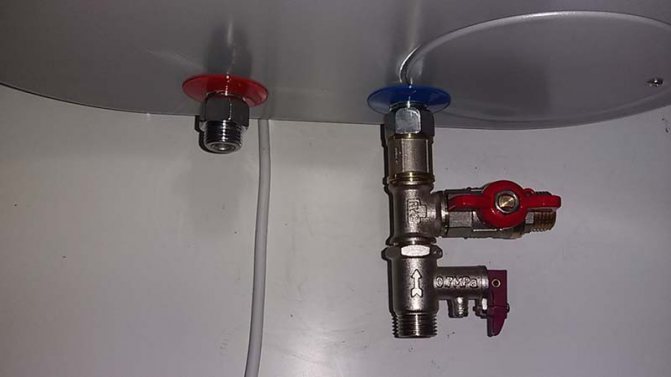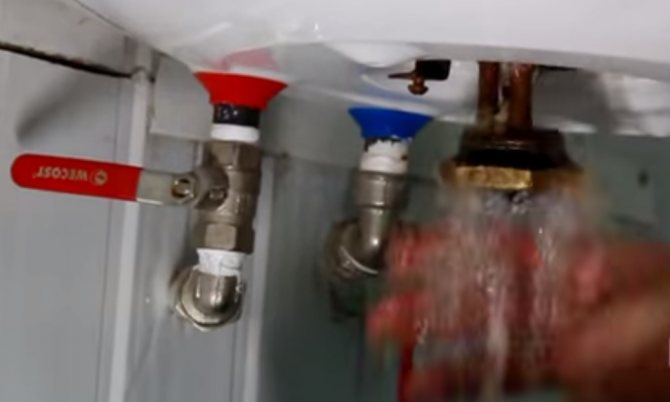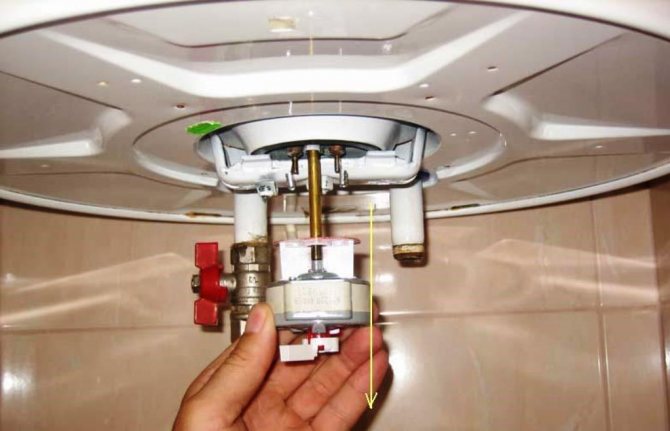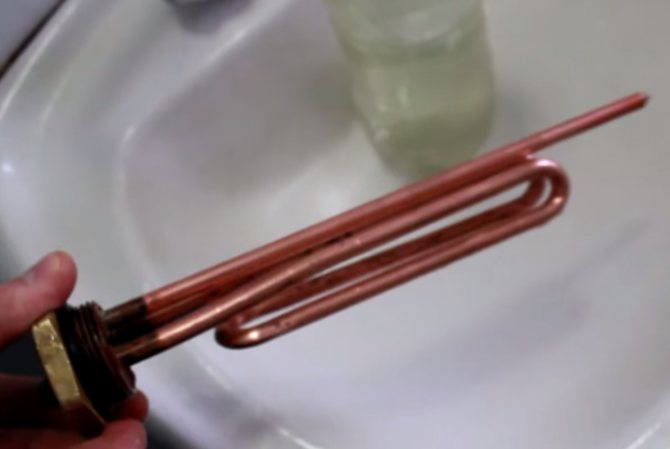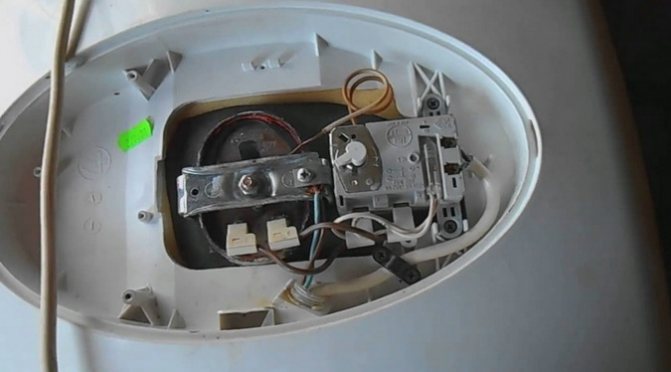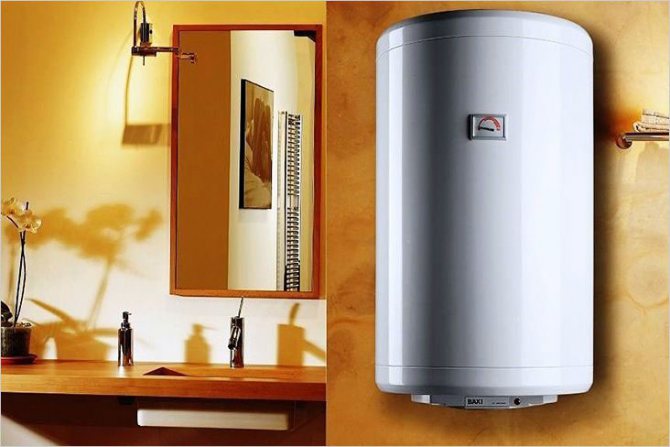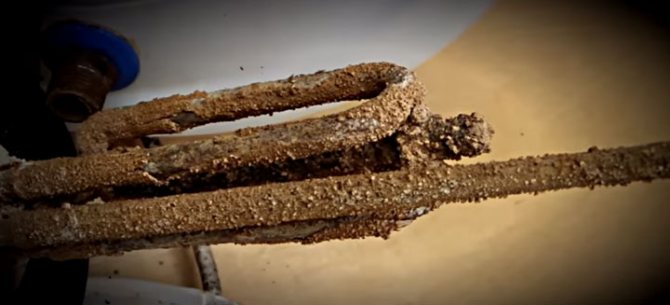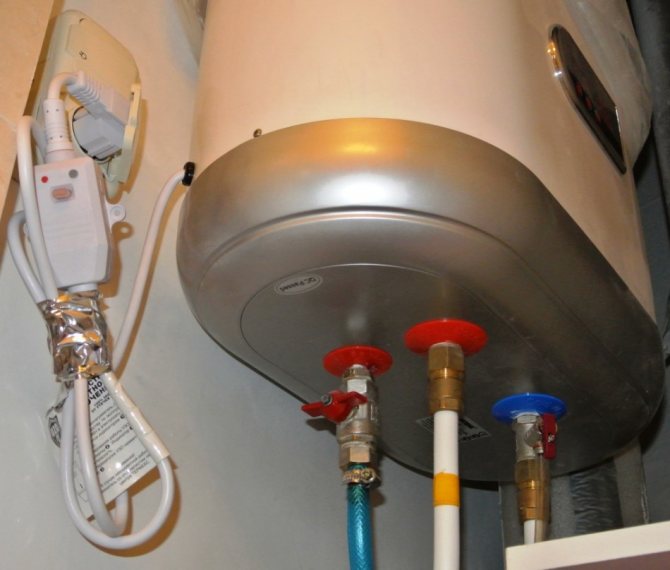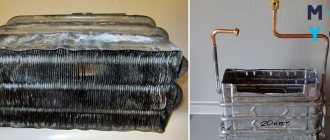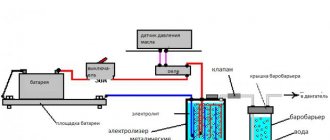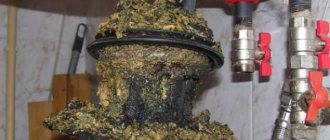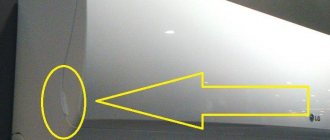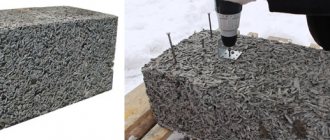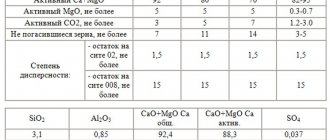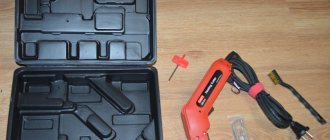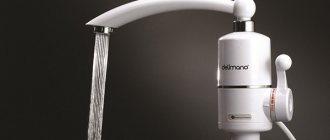What tasks do heating elements perform?
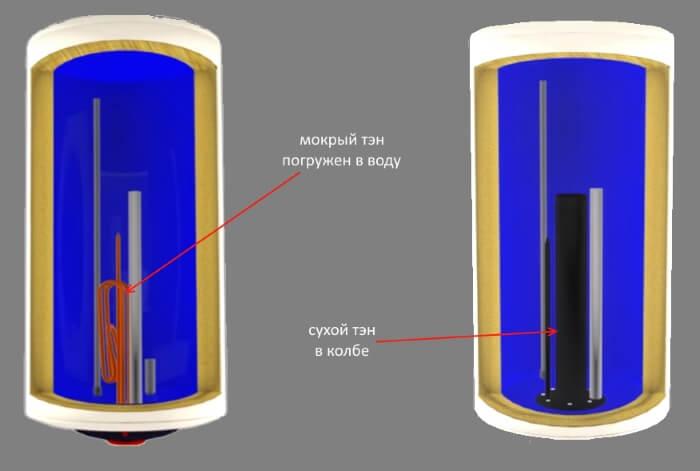
Water heaters with "dry" and "wet" heating elements
The heating element for the Ariston water heater can be "dry" or "wet" and they differ from each other in the principle of their location. "Dry" products are in demand, as they are placed in a protective casing, due to which contact with water is excluded.
Such heating elements have their own characteristics:
- longer service life;
- longer water heating;
- higher cost.
Since "dry" heating elements are at the stage of development, there are several variations of them.
- The simplest and most common option is when the heating element is placed in a flask. Such a product has a minimal cost and does not cause difficulties in replacement.
- There is a mechanism, the flask of which is filled with quartz sand. This option is easier to replace.
- There are also products where the flask and the heating element have a layer of oil between each other. Since oil has a higher thermal conductivity than air, this product achieves maximum energy savings.
Using a dry heating element for the Ariston boiler, the appearance of electric potential in the water is minimized, which makes the operation of the heater practical and safe.
There is also a heating element for "wet" type aristones.
The open element is in contact with the liquid in the storage tank. There is quartz sand or magnesium oxide inside the tubes of the heating mechanism. These substances conduct heat efficiently.
Open-type heating elements are classified according to the following technical characteristics:
- Is there an anode socket. A heating element with a nut may not be equipped with an anode fastener or have it as an additional one - a retainer on the flange.
- What is the mounting method. The element can be fastened with flanges and nuts. Flanged heaters are manufactured using casting or stamping technology.
- The shape of the heating element depends on the type of storage tank. Can be straight or curved to either side.
Stainless steel and copper are commonly used to make a wet appliance.
The heating element for the Ariston water heater is produced by an Italian company. For manufacturing, an alloy of copper and chromium-nickel is used. Thanks to the brass flange, the device has a high heat dissipation. The power depends on the model, but varies from 1 to 4.5 kW.
Checking the heating element with a multimeter.
Here is the ten ariston itself (heating element).
We remove the power terminals and check the heating element with a multimeter (tester). We measure the resistance in ohms, the working resistance should be about 30 ohms.
The tester does not show any resistance, it means that the heating element is “open-circuit”, that is, it is faulty. Replacement of ten Ariston is required. With such a defect, the machine will fully work out the mode, but the wash will take place with cold water. That is why things will not wash well.
In a particular case, it also happens that the heater "does not break off", but begins to close to the body. In this case, the Ariston washing machine will not fully work out the washing mode. It will stop and give an error F08 (error codes can be found here) before rinsing. When checking the heating element with a multimeter, the resistance at the ends will also be normal (approximately 25-30 Ohms), but when measuring the resistance between the ends and the body (mass) on Mega Ohms, the tester will show resistance from 1 MΩ to 200 MΩ. In this case, you will also need to replace the heater.
How to choose the right mechanism
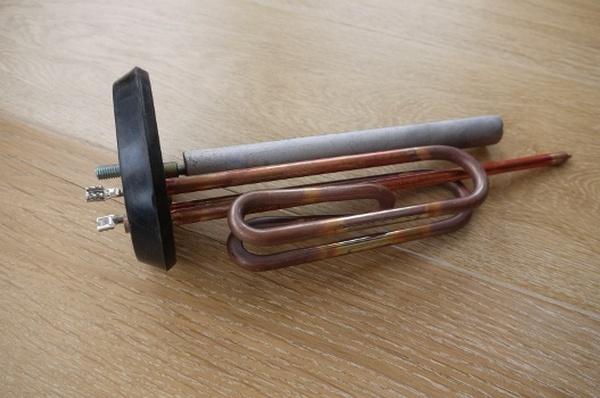

Heating element for boiler Ariston
How the designation of heating elements is read, for example, heating elements - 32 A 13 / 1.5 J 220 where:
- TEN - tubular electric heater.
- 32 - the unfolded length of the heating element along the shell.
- A - designation of the termination of the contact rod.
- 13 - the diameter of the heating element shell.
- 1.5 - rated power in kW.
- J - designation of the medium for heating and the material of the heating element
- 220 - rated voltage in V.
If you navigate in the marking, you can find the desired model quickly and without unnecessary nerves. And for this you do not need to walk with a centimeter or carry a broken product with you. It will be enough to compare the data on your heating element and the one that you are going to buy.
When choosing a heating element for the Ariston boiler, you should pay attention not only to the price, but also to the structural differences. It is also necessary to consider the performance characteristics of electric heaters.
Having a stable voltage and proper operating conditions, a "wet" heating element will last an average of 5 years, and a "dry" one - 15.
The company recommends purchasing equipment for replacement in factory-made water heaters and according to the available unit model.
TENs with a capacity of 1.5 kW are more common for Ariston boilers. They are often used in both 20 liter and 100 liter equipment.
Engineers strongly advise against replacing a low-power heating element with a more efficient one, since the water in the equipment heats up to 85 degrees and the boiler turns off. And high power disrupts the operation of the device and increases the cost of each water heating.
When choosing a heating element, you should also pay attention to the flange. Threaded - thanks to the existing thread, the heater is attached to the boiler by screwing it in. The thread diameter is 1 1/4 inch. Clamps - there are such diameters: 62 mm, 72 and 82 mm.
For dry heating elements - they are made of enameled metal, almost always paired, they have divorced close-set contacts with a "petal" type mount.
Prevention as a way to avoid problems
Not only home owners provide themselves with autonomous hot water. More and more residents of apartment buildings prefer to install flow-through or storage water heaters. There are 2 reasons for such unconditional popularity - interruptions in hot water supply, especially in the off-season, and the high cost of hot water supply.
For several years, the Italian boilers Ariston have been popular. They are of high quality, reliability, long service life, if used correctly. Nothing eternal has yet been invented, and therefore sometimes you have to do repairs yourself.
And although a water heater is a rather complex device, its regular cleaning and maintenance can be done independently in just a couple of hours. The main thing is that before starting the actual work, understand not only how the equipment works, but also how to disassemble it correctly.
The most important thing is to completely drain the water from the boiler. On the lower part there are 2 nozzles, one of them enters the boiler, and the other is drained.
Even after the water is completely drained, some of it remains at the bottom of the tank, so place a bowl for the rest before opening the lid.
Since a high-quality drain is the key to the successful outcome of the entire operation, we will dwell on it in more detail.
The procedure depends on the features of a particular model - with a trigger, tee or by means of a check valve.
- the most whimsical model is considered to be one in which a fitting tee is built between the pipe and the valve. You will have to unscrew it with an adjustable wrench and drain all the water.
- on those models where there is no tee, but there is a trigger - a jumper on the return valve. You can bend it, fix it and wait for all the water to drain. This process usually takes 1.5-2 hours.
- the simplest and therefore most effective way is to unscrew the check valve counterclockwise. Before that, connect the hose to the water outlet and drain.
If, during any manipulations, water does not flow from the return, open the hot water tap to create the necessary air flow, and do not close it until the boiler is empty.
Attention! All work is carried out only after the water heater is disconnected from the power supply!
How to properly disassemble the boiler?
For those who have no time to read, we have prepared a video instruction on how to disassemble an ariston water heater. Here you will learn about the features of installation, connection to pipes, cleaning, etc.
Required tools
- screwdriver;
- pliers;
- knife;
- a water drain hose that matches the diameter of the return pipe;
- replacement anode;
- a special agent for cleaning heating elements, you can also use a concentrated solution of citric acid.
We repeat once again, all work on the disassembly of the water heater is carried out only when it is completely de-energized.
Procedure
- Remove the cover from the bottom of the boiler by unscrewing the bolts around the perimeter.
- Drain the water as indicated earlier (it is easier and faster to drain through the pipe).
- There are several bolts on the inner case, they must be unscrewed (do not forget to substitute the bowl, about 15-20 liters of water still remains in the system).
- Over time, the bolts "bake" and it is very difficult to unscrew them. If this has happened now, it is better to remove the boiler from the wall, lay it horizontally and then unscrew it. By the way, the tightness of the twist indicates a high-quality assembly.
- Pull out the electrical unit very carefully. But so that the rubber gasket remains intact - it is very easy to tear or deform it. At this stage, it is advisable to photograph everything that you are doing. Then you will have to collect in the reverse order and then your photos will be very useful.
- If necessary, replace the anode with a new one, and soak the heating element in a citric acid solution. The minimum time is a day. After 24 hours, take any non-sharp object with a narrow end and carefully remove the scale from the heating element. All this should be done only if the cause of the breakdown is a burned out heating element or the need to replace the magnesium anode. How to find out what exactly this prevents the operation of the unit - hereinafter.
- The electrical block of the boiler is treated with a cleaning composition. Plaque can be removed with a dry, hard sponge.
How to determine that the heating element and / or anode has failed
- The device does not heat up the water - if you are convinced that the outlet is working and there is electricity, the malfunction lies in the heating element.
- The water heats up very slowly - the magnesium anode must be replaced.
- During operation, a distinct but dull hiss is heard - excessive scale and deposits on the heating element.
How to properly clean the heating element from scale - video expert:
How to disassemble Ariston?
A feature of Ariston water heaters is the presence of an oval-shaped flange.
- disconnect the boiler from the network;
- drain the water through the return pipe;
- remove the cover from the bottom of the unit;
- carefully pull out the thermostat so as not to damage the gasket;
- an oval flange is accessed.
Before starting to pull out the flange, it is necessary to unscrew the nuts on the bar, remove it, pull out the heating element with a scrolling motion, and only then remove the flange. Otherwise, it will not work.
In order to replace and correctly install the flange, take a photograph of its position in the neck of the water heater in advance. Otherwise, water will constantly leak.
Be sure to change the gasket! It should be of high quality, preferably a branded product, designed for 2 years of continuous operation.
After the flange and gaskets have been replaced, the electrical block, internal components, heating elements are cleaned with a sponge, and the magnesium anode is replaced if necessary.
The assembly is carried out in the reverse sequential order so as not to disturb the structure and to prevent its failure.
Dismantling the medium class boiler
The range of products includes medium class water heaters with improved functional characteristics. The main design feature is that here the flange is bolted in the amount of 4-6 pieces.
- disconnect the device from the network;
- drain the water;
- remove the cover from the bottom of the case;
- disconnect the wires from the heating element and unscrew all the nuts;
- slightly pressing the heating element inward with a slight scroll, pull it out - clean or change;
- unscrew the nuts on the bar and take out the flange;
- change it and the gasket.
Installation and connection methods
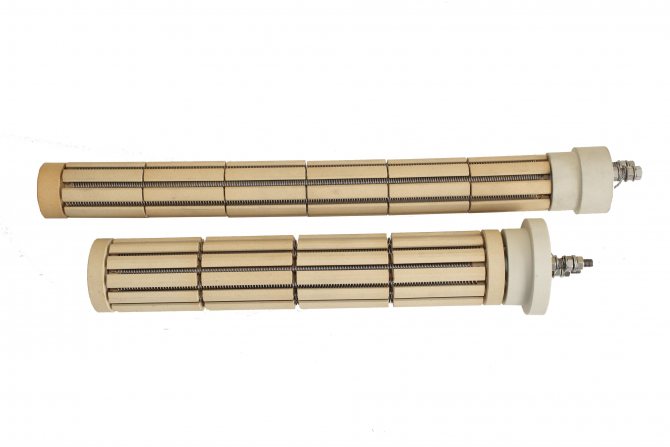

"Dry" heating element
Teng is a device that requires regular maintenance. After a while, it needs to be cleaned or replaced, depending on the efficiency and completeness of the work.
To clean the heating element yourself, you need to follow the instructions:
- Turn off the electric water heater.
- Disconnect the electric heater from the power supply.
- Open the cover by unscrewing the screws.
- Disconnect the cables under the panel where the thermostat and colored wires are located.
- Shut off the water supply to the water supply system and boiler.
- Pull out the thermostat together with the heating element, removing the flange if necessary. In this case, substitute a container to the opening in case there is water in the tank. Unscrew the heating element with an adjustable wrench.
- Dissolve two packets of citric acid in two liters of water.
- Immerse the heating element in the resulting solution and leave for at least 12 hours. After a while, the heating element is ready for installation.
- Install in reverse order.
To check the correct installation of the heating element, you will need to turn on the water. If fluid leaks from the tank, the device is not properly connected.
Several heaters can be installed in the boiler, depending on the power of the unit. The power, in turn, may depend not only on the heating element, but also on the way it is included in the system.
There are three main ways to connect the heating element for the Ariston water heater. Sequential - the power of the heater depends on the total power of each element. The disadvantage is that if one heating element breaks down, the performance of the entire heating system is lost.
Parallel - allows you to maintain the unit's performance in the event of failure of one of the heating elements. Combined - usually used if there are no heating elements of the required power.
How the water heater works
The design of a storage electric water heater (boiler) is not very complicated. It consists of the following elements:
- a case of various sizes and shapes depending on the model;
- storage for water - a tank with different capacities;
- a layer of thermal insulation, which is located between the body and the tank and retains heat for a long time;
- a tubular electric heater that heats water to a certain temperature;
- magnesium anode, which protects the heating element and the tank from scale and corrosion;
- tubes for taking hot water;
- pipes for supplying cold water;
- sensors (thermostats, thermostats, temperature switches);
- control panels (power indicators, mode switch, thermostat regulator).
Opening the cold water tap will fill the tank. After waiting for that time when the air is removed through the hot water intake tube, turn on the heater. The signal from the temperature sensor at low water temperature in the tank closes the electrical circuit and includes a heating element Termeks.
The water in the tank is heated, depending on the position of the thermostat, to the temperature set on the thermex control panel. At the moment when the temperature of the thermostat and thermostat coincide, the heating element turns off. The boiler will be located in temperature maintenance mode... When the heated water is withdrawn, this entire process is repeated.
The main types of breakdowns
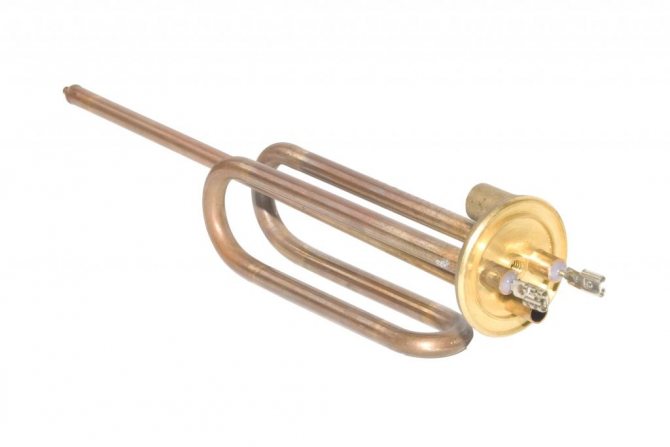

"Wet" heating element
When operating electric storage-type water heaters, technical questions often arise about the performance of a particular part. But the most common problems are breakdowns of the heating element, which, under the influence of external and internal factors, tends to fail.
Signs of a heating element malfunction:
- knocks out the safety switch of the electrical network;
- heater cut-out fuse trips;
- the tap water flows cloudy and has an unpleasant odor;
- the unit works loudly: hiss, crackles, etc .;
- the outlet water is cold;
- the device is constantly switched on and off.
Each of these signs indicates that the heater is not working properly. In this case, it should be replaced as soon as possible. As a rule, this restores the operation of the unit.
If the replacement of the heating element did not correct the situation, then in this case, you should contact the specialists for the warranty card. If its term has expired, then you will need to find a proven service center, where you can establish the cause of the breakdown and eliminate it as soon as possible.
Tips for disassembling the structure and cleaning the wet heating element
Before cleaning the boiler begins, the device must be disassembled by pulling out the heating element. To do this, first remove the decorative plate that covers the contacts and the place where the element is attached. It can be screwed on or latched on. Having reached the internal elements, it is recommended to photograph them so that there are no problems with the subsequent recovery of the system.
We disconnect all contacts, after which we take out the heating element. If the device has not been descaled for a long time, proceed very carefully. Accumulated dirt may prevent the heating element from being easily removed. You do not need to pull it, it is better to try to carefully clean the deposits.
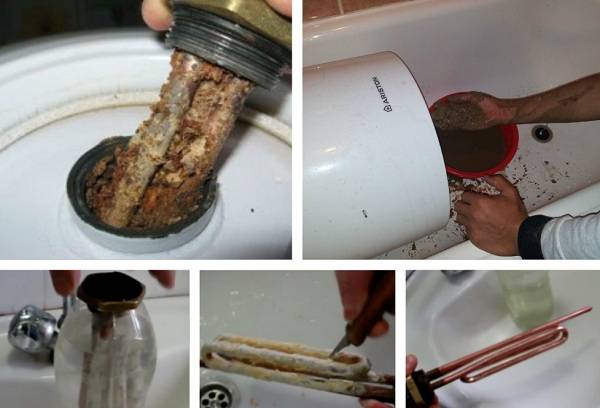

Tip: Having reached the insides of the structure, it is recommended to assess the condition of the magnesium anode. If it is severely thinned, then it should be replaced without waiting for the element to fail.
In most cases, scale layers are collected on the tubular part, and there is not much of it inside the tank. It is enough to turn on the water to wash everything unnecessary from the boiler itself. If you cannot clean the boiler in this way, you will have to work with your hands. The main thing is not to try to facilitate the process by using aggressive abrasives. You need to use only proven safe means.
To clean the heating element itself from the scale layer, it is necessary to carry out the following manipulations:
- We clean off the main part of the dirt mechanically using a knife or something similar.
- Next, dilute citric acid in a tall glass made from a plastic bottle (just cut off the neck). For 2 standard sachets of powder, about 2 liters of warm water.
- We place the heating element in this structure for at least a day. This time will be enough for all the dirt to come off, and the heating element returns to its original form.
Recommended: 7 ways to hide pipes in the bathroom
After carrying out these manipulations, you can assemble the boiler, test it and subject it to further operation.
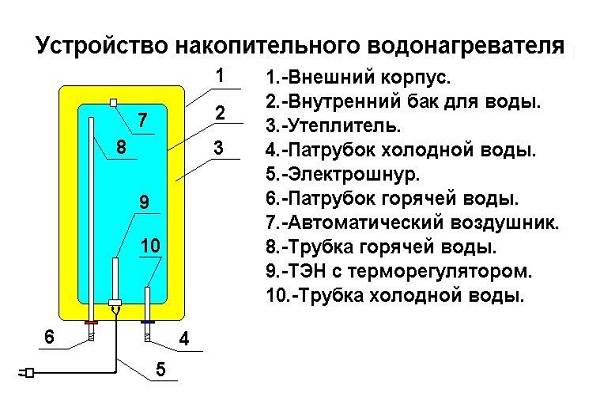

Customer Reviews
Sergey, Moscow: “We bought an Ariston SG-100 boiler in 2020. According to its pricing policy and minimal functionality, it is pretty good. Copes with water heating perfectly. The temperature is set using a thermostat, which is located under the protective cover. Initially, it seemed to us that this method is not very convenient, since to remove the cover you need to unscrew two bolts. But in the course of operation, it turned out that this was not a problem. Moreover, the water temperature is regulated twice a year: in spring and autumn. I think a small feature is the absence of a plug for connection.This unit is connected to the network through a 16A automatic machine. "
Vladimir, Moscow: “Installed a water heater Ariston 7 years ago. Worked great. Three years later, the mother-in-law installed the same. I'm also happy. But after 6 years of service, the heating element burned out. I decided to change it myself. It turned out that there is nothing complicated about it. The heater itself bought a branded one, as I read negative reviews about unknown manufacturers. The heating element has been working normally for 1.5 years already, I hope it will continue this way for at least 4 years. "

